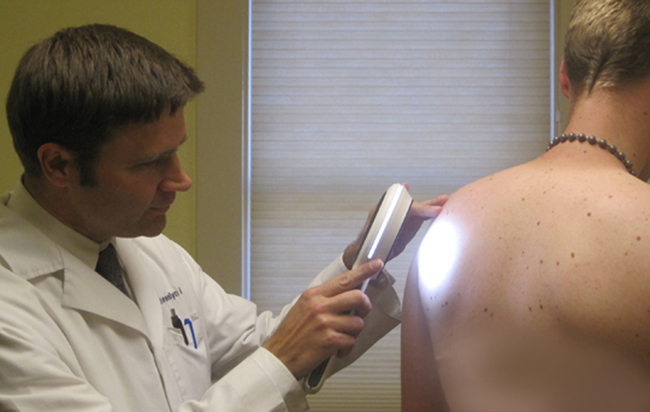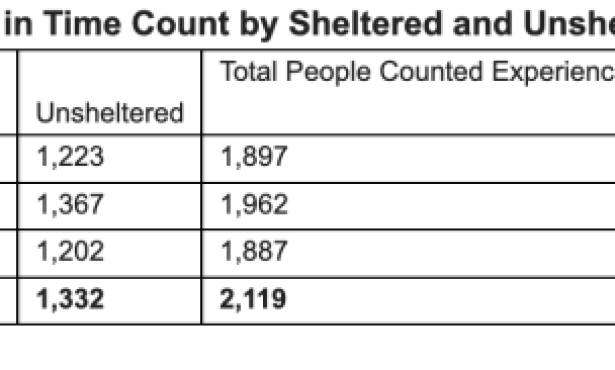Free Melanoma Screening Provides Needed Exams, Raises Awareness
Also, Skin Cancer Myths and Facts

In support of Melanoma Awareness Month (May), Cancer Center of Santa Barbara – in partnership with local dermatologists – offered melanoma screenings to uninsured and underinsured members of our community.
Over 70 individuals received full-body skin exams, and 8 were recommended for follow-up care due to suspicious findings. These individuals, as well as all event attendees, were given information regarding affordable healthcare in our community. Although melanoma is the most serious of all skin cancers, it can be treated successfully if detected early. Cancer Center is relieved to provide this possible early detection for 8 of our community members.
Volunteering dermatologists included: Dr. Keith Llewellyn, Dr. Kim Grafton, and Dr. Gary Novatt. Cancer Center is thankful for their support
Even though Melanoma Awareness Month has passed, the hottest summer months are approaching. Cancer Center of Santa Barbara reminds us all to enjoy the sun safely and to schedule a full-body skin exam each year with your primary care physician or dermatologist. It is also advised to perform monthly self-skin exams, and to be aware of any unusual moles or irregular blemishes that could signify the onset of melanoma or the more common types of skin cancer, including basal cell and squamous cell carcinoma.
For more information regarding skin cancer prevention, visit ccsb.org/sunsafety
The Cancer Center of Santa Barbara is an independent, not-for-profit corporation, providing state-of-the-art cancer treatment. Since 1949, through the charitable giving of families and foundations, the Cancer Center has stayed in the vanguard of comprehensive, non-surgical, outpatient cancer care. By retaining highly trained and devoted medical personnel, acquiring the latest technology and protocols, and integrating patient support and wellness programs, the Cancer Center treats those on the journey to live with, through, and beyond cancer.
Skin Cancer Myths and Facts
With Memorial Day approaching, Cancer Center of Santa Barbara would like to debunk a few skin cancer myths and provide you with factual information. Skin cancer is the most common form of skin cancer, yet it’s very preventable, so take note and visit ccsb.org for more information!
__________________________________________________________________________
Myth: I’ll only get skin cancer if I lay out in the sun.
Fact: Every time you’re outside, your skin is exposed to the sun.
Myth: A healthy tan will protect my skin.
Fact: A tan might look good to some people, but it really means your skin has been damaged. Producing melanin, which makes your skin look darker, is your skin cells’ response to damage from the sun. With repeated sun exposure over time, this damage can lead to skin cancer.
Myth: A tanning bed is a safe way to get a tan.
Fact: A tanning bed produces ultraviolet rays, just like the sun. In fact, a tanning bed can be even more dangerous than the sun. They produce mainly UVA radiation, which penetrates deeper into your skin, while sunlight contains a mix of UVA and UVB and gets filtered by the ozone layer.
Myth: I don’t have insurance, so there isn’t anything I can do.
Fact: There are many resources available for those in our community who are uninsured or underinsured. For more information about obtaining affordable cancer screenings, please call the Santa Barbara Public Health Department at 681-5463 or Santa Barbara Neighborhood Clinics at 961-4628. Cancer Center of Santa Barbara can also be reached at 569-2243 for more information.
Myth: If I wear sunscreen, I can stay in the sun as long as I want.
Fact: Sunscreens don’t last forever. Here’s a quick way to figure out how long your sunscreen will protect you: multiply the SPF (Sun Protection Factor) by 10. The answer is how many minutes you can stay in the sun—then you need to cover up, go inside, or re-apply your sunscreen.
Myth: I don’t have to worry about skin cancer because my skin is naturally dark.
Fact: People with darker skin are still susceptible to skin cancer. In fact, melanoma in people of color is often missed until later stages resulting in poorer treatment outcomes. Even if you have naturally dark skin, you need to protect yourself from sun exposure and perform regular skin exams.
Myth: I don’t need to begin screening for skin cancer until I’m in my 50s.
Fact: Skin cancer affects people of all ages. Protection from the sun should begin at birth, and regular skin exams should start at age 20. Individuals age 20 and older should learn how to perform a full-body skin exam at home, and they should also schedule a skin exam with their primary care physician or dermatologist each year.
Myth: I grew up going to the beach a lot, so skin cancer is inevitable
Fact: Even if you have had a significant amount of skin cancer, it doesn’t mean that you will inevitably be diagnosed with skin cancer. If you always wore the proper protective clothing and used waterproof sunscreen appropriately, you may have effectively minimized the damage to your skin. However, it’s still very important to have regular skin exams!

